OnLive MicroConsole (Review)
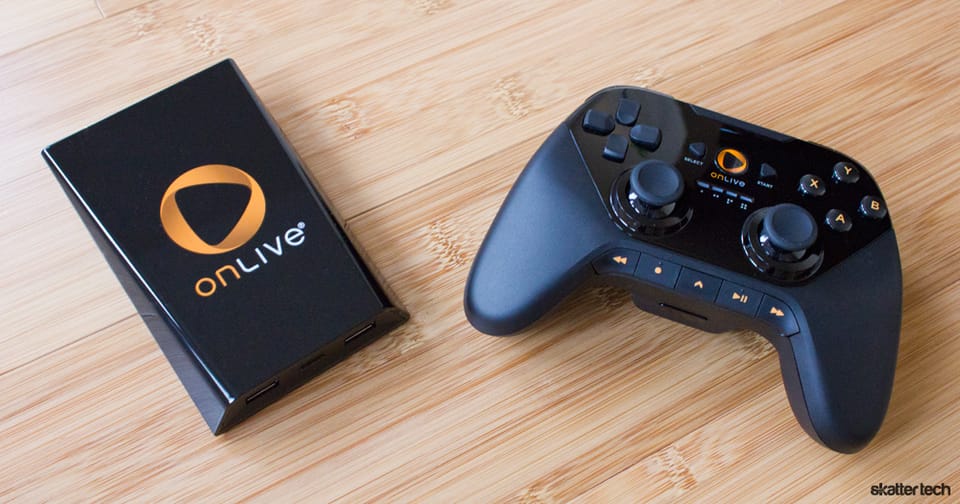
Playing a brand new game generally requires a computer with the latest hardware or a current-generation gaming console such as the PlayStation 3, Xbox 360, or Wii. OnLive’s service essentially shakes up these traditional necessities with a new streaming technology. With a constant high-speed network connection being the only requirement, those looking to enjoy a flagship title can install a little program on just about any computer even if under-powered or take advantage of an existing HDTV with the OnLive MicroConsole.
We have mentioned OnLive in the past and with concerns at least once, but never had a chance to review it. Since then, the service has grown to include a larger selection of titles reaching nearly a hundred and the company now offers a more attractive pricing scheme too.
The MicroConsole
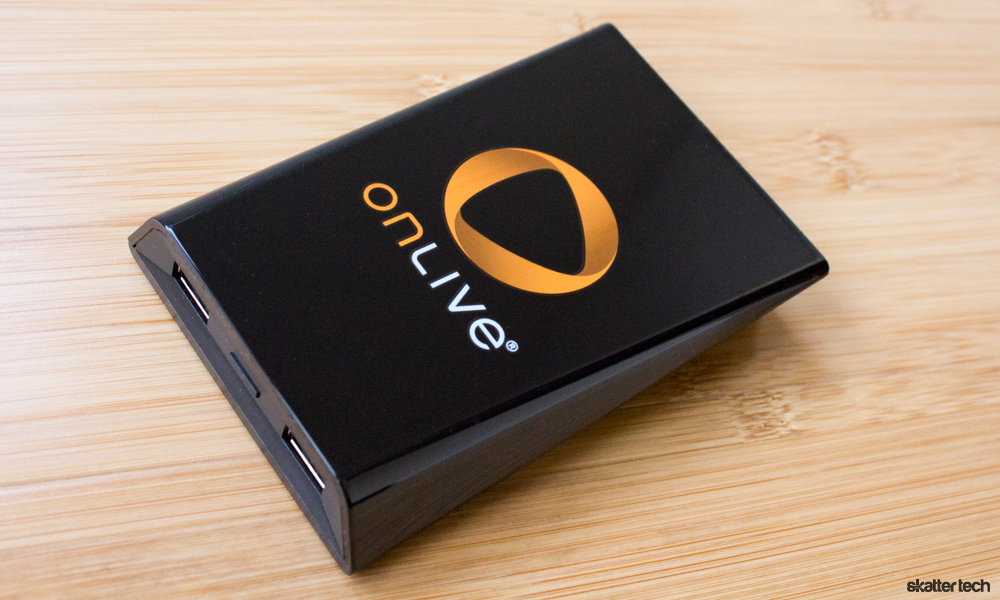
The OnLive Game System retails for $99. This package includes a MicroConsole TV adapter, a wireless controller plus a rechargeable battery, a power supply, a HDMI cable, a USB play and charge cable, two AA batteries, and an ethernet cable. Additional controllers are $49.99 and an optional component video adapter is available for $29.99 too.
While traditional gaming consoles feature plenty of processing power inside, this device merely receives a stream of video from OnLive’s cloud and sends actions from your controller back to the same servers. Since the MicroConsole does not need as much horsepower, the device is only about the size of two decks of cards with just the bare essentials inside.
The MicroConsole features plenty of connectivity with ports for Ethernet, HDMI, Optical, two USB ports, and a power input. Despite a lightweight footprint, the device can deliver up to 1080p over HDMI and 1080i over analog using the component video adaptor. Of course, it requires a wired internet connection with at least 3-5 Mbps of bandwidth depending on the size of your television screen.
While the device unfortunately lacks WiFi connectivity, which is a major flaw, there are other solutions for those trying to get online when too far away from a router. For instance, users can set up a WiFi Bridge by linking the MicroConsole with a WiFi-enabled computer using an Ethernet cable.
Wireless Controller
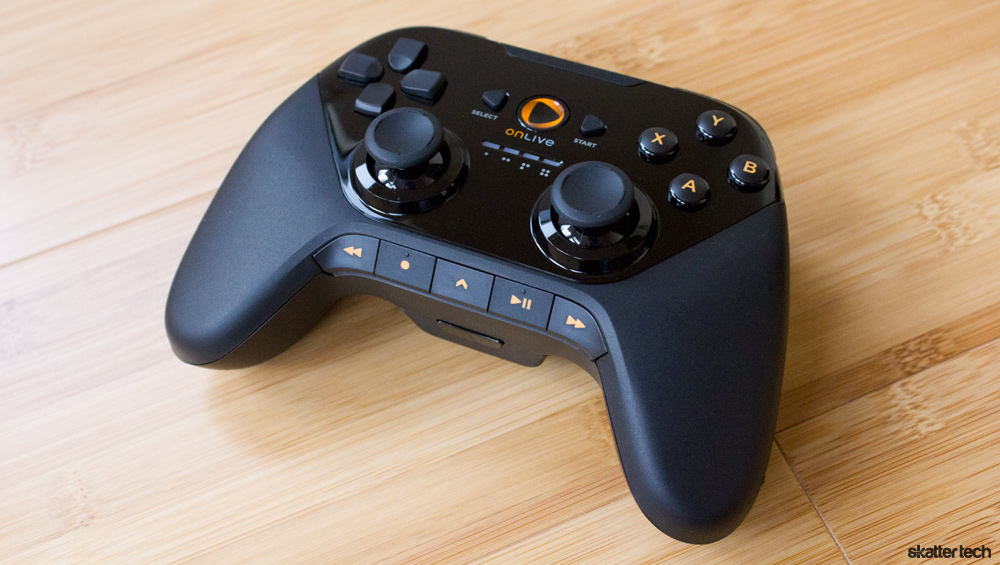
The Wireless Controller is a near clone of the Xbox 360 controller with the addition of a few playback buttons at the bottom. It feels just as solid as an Xbox 360 controller and only a bit heavier. OnLive claims the included rechargeable battery will last through 36 hours of play — though I did not have enough time to verify this claim. It is also easy to plug the controller into the port on the front of the MicroConsole with the included USB cable for charging while playing games.
OnLive also deserves a credit for making the Wireless Controller compatible with a set of two AA batteries too. For those wondering, up to 4 players can simultaneously enjoy split-screen games with one console too. If you are not a fan of the OnLive Wireless Controller, the MicroConsole also supports plugging in a keyboard or mouse with USB.
Gaming Experience
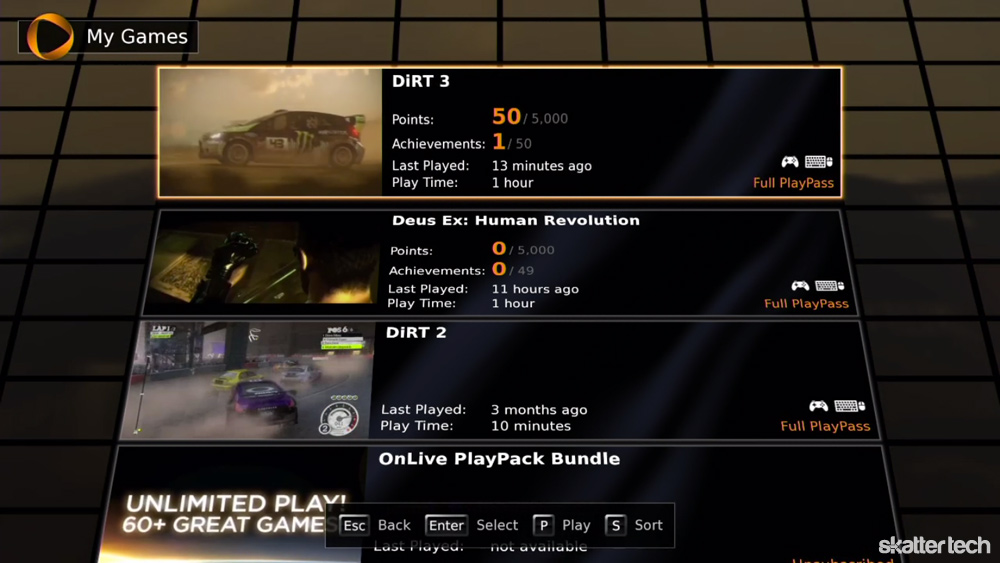
I tested two games over the course of two hours with the MicroConsole. The first was Deus Ex: Human Revolution and the second was Dirt 3. I played these titles on a 46 inch Sony Television over HDMI and using a 20 Mbps connection. Other network activity was kept to a minimum and I had a chance to try the controller in both wired and wireless modes.
To be honest, I did not have high expectations for OnLive as I went into playing Deus Ex, an action role-playing game. Surprisingly, I found the responsiveness of the menus and the quality of the stream in the opening scenes quite impressive. It felt much like watching a 720p Hulu video stream.
When the actual gameplay began, things changed as I noticed more dropped frames and bit of lag in the responsiveness of controls. In one instance, I would move my character forward slightly and he would continue to move for a fraction of a second after I released the joystick. This issue fortunately faded away to a certain extent as the system adjusted itself to accommodate the network capabilities.
The game is quite playable for most, but I would not be too surprised to hear complains from slightly more serious gamers. Unfortunately, that concern has some validity. I noticed some difficulty with precision aiming and quick reactions during gun fight scenes. Making micro movements to aim and shoot was more of a problem than it should.
I had some similar issues with Dirt 3 which is a rally car racing simulation game. There was a major disconnect between my actions and that of the vehicle on-screen making the game very difficult to play. I spent nearly a half-hour on the first race replaying over and over. There was simply too much lag between each move which becomes quite frustrating. While OnLive users will likely learn to anticipate and compensate for the mentioned issues, it is still a major downside to the cloud-powered technology.
Experience On A Computer
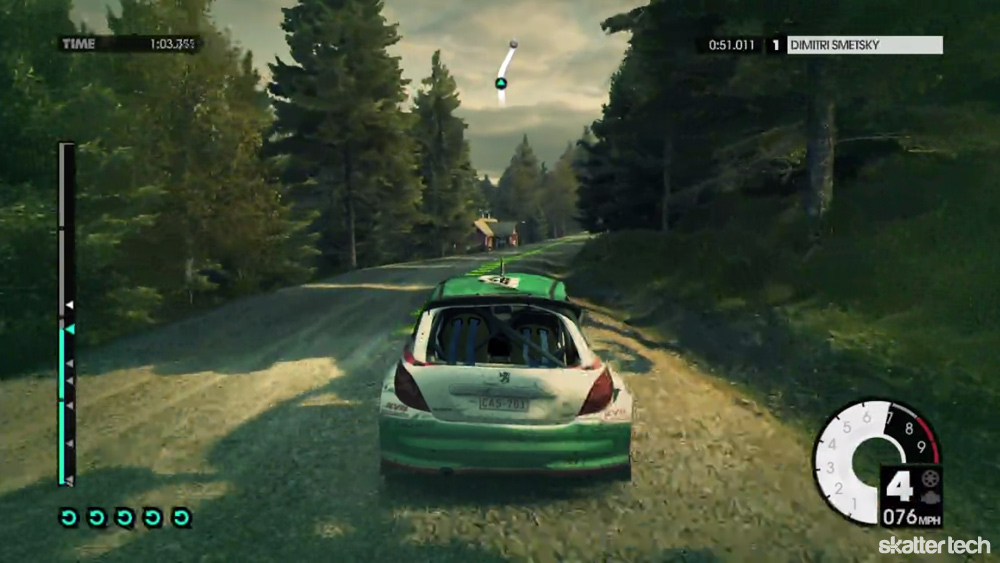
I tested the same two games on the Mac over a WiFi connection using a keyboard and wireless mouse. I initially thought I would be able to use the OnLive controller on my Mac, but soon realized otherwise. While the OnLive client supports the use of gamepads on both Mac and PC, it does not work with the OnLive Wireless Controller — though it ironically supports the Xbox 360 controller.
Gameplay is essentially the same on both a PC and Mac. I tried the same level in Dirt 3 and anticipated even more difficultly with accuracy of controls due to a wireless connection, but I found that it was actually more responsive and playable on the Mac. I also felt that it was easier to make smaller movements by tapping the keys on my keyboard, but some of the same problems with precision remain.
I dove into Deus Ex and continued in the story mode to find that using a mouse makes it easier to accurately aim and fire — definitely more responsive than the MicroConsole too. Quality was definitely better on my Mac. While games are still not nearly as responsive as a traditional console, the client on my computer was definitely better than using the MicroConsole.
The Price
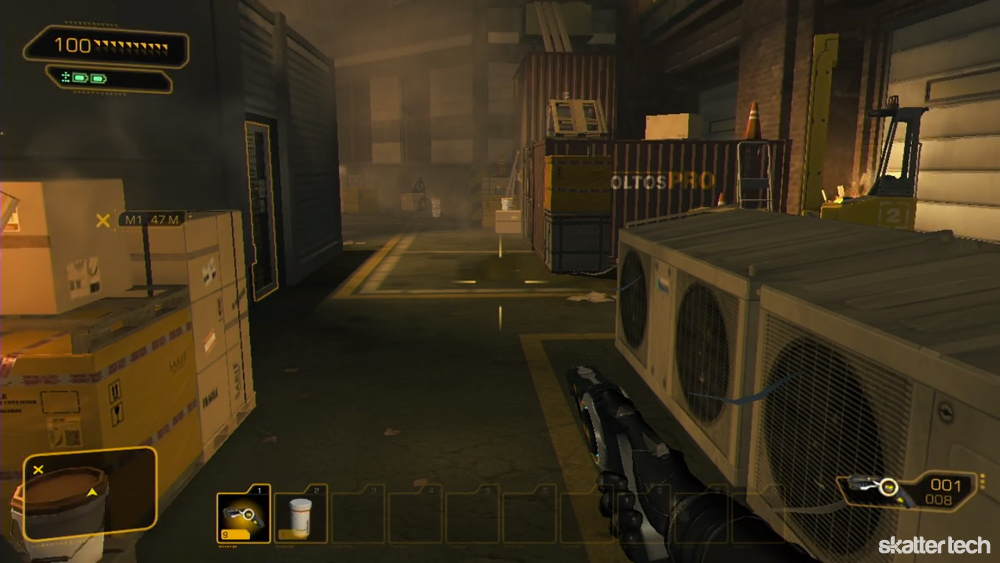
OnLive originally charged $15 a month just for access to the service, but membership is now free. Users still need to pay to play a game and 10 minute demos are available to get users interested. Games are available through several pricing models: purchase, rent, or subscriptions. Buying a title is approximately the same price as a console game coming in at around $50 for a new title or $30 for an older one. Rentals generally last 3-5 days with a price tag ranging between $5-9. Finally, the PlayPass subscription model offers unlimited monthly access to over 90 games for $9 a month — though it excludes many new releases.
The Bottom Line
I have two very varied opinions when it comes to making up my mind about OnLive. From one perspective, the service is an amazing technological feat. On the other hand, OnLive requires a hiccup-free high-speed network and still faces issues with controller accuracy, lag, and low frame rates. While hardcore gamers will simply dismiss and smirk and at the mention of this gaming solution, it is definitely a viable option for casual gamers.
As someone who is not too serious about gaming but enjoys picking up a controller from time to time, OnLive makes sense. Low-end hardware is no longer a barrier either. The service also comes with plenty of advantages too. For instance, I can play any game in my OnLive library on my laptop, the MicroConsole, or just about any computer with my account credentials. The company is also for pushing the service to tablets so gamers can enjoy the same set of console titles on the go and even use a regular controller paired over Bluetooth.
Those debating purchasing a dedicated PlayStation 3 or Xbox 360 over a MicroConsole have a few things to consider. The selection of titles with OnLive is quite limited though quickly growing. Then again, the MicroConsole retails for just $100 while the other aforementioned solutions are nearly 2-3 times as expensive. Technologies such as Xbox Kinect or PlayStation Move are definitely out of the question limiting gaming to just a traditional controller. With that being said, accessing OnLive will keep getting easier as the service will soon make an appearance embedded into smart TVs, Blu-ray players, and even set-top boxes.
If you have a high-speed network, OnLive is definitely compelling and will likely become even more attractive if the company continues to innovate at the same pace. It is simply too hard to recommend the MicroConsole to everyone since there are just too many variables from selection of titles or hardware limitations such as the lack of WiFi. With that being said, I think it is important to evaluate your necessities before pulling the trigger on the shopping cart. At the very least, it is easy to install the OnLive client on your computer to give the service a test drive.
Links: OnLive
Editor’s Note: Sahas Katta contributed to this review.